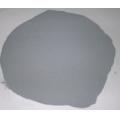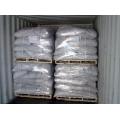- Contact Person : Ms. Merry Guan
- Company Name : Gansu Lixinyuan Microsilica Co.,Ltd
- Tel : 86-931-8516826
- Fax : 86-931-8507755
- Address : Gansu,Lanzhou,NO2599,yanbei Road
- Country/Region : China
- Zip : 730000
Micro Silica for refractory
The basic forms of sulfate attack are the following:
The reactive aluminates in the cement will react with the gypsum in cement during hydration. This process is harmless as the ettringite does not produce expansive forces and is stable in sulfate solutions. If the quantity of reactive aluminates in the cement is too high, then their hydrate form will be available to react with sulfates after the cement has hardened.
This will produce expansive ettringite and cracking of the concrete.
Aluminate Hydrate + Calcium Hydroxide + sulfate + water => Ettringite.
The second principle cause attack is the acid interaction of sulfates ions and calcium hydroxide, causing gypsum formation.
Calcium Hydroxide + sulfate + water => Gypsum
It has been shown that the cation (calcium, Magnesium, Aluminium, Ammonium) of the sulfate salt affects the type and the severity of the attack.
4. Improvement of Reinforcement Corrosion Protection
In a marine structure, the performances of the concrete in terms of sulfate resistance must be taken into consideration for concrete design but the resistance to chlorides diffusion through the concrete is generally a main concern as well.
Some studies conducted in several countries proved that Type 1 cements (with high C3A content) blended with Silica Fume used in combination with a high range water reducer provide high durable performance against chloride-induced reinforcement corrosion and against sulfate attack.
The main reasons of this result can be summarize as follows:
- Silica Fume reduces the permeability of the concrete. Water and chemicals ingress are thus reduced.
- The ability of high C3A cement to complex with chlorides results in the formation of insoluble compound, able to reduce the mobility of free chloride ion to the reinforcement-concrete surface.
Silica fume can make a significant contribution to early-age strength of concrete. One pound of silica fume produces about the same amount of heat as a pound of portland cement, and yields about three to five times as much compressive strength.
Silica fume improves concrete in two ways the basic pozzolanic reaction, and a microfiller effect. Addition of silica fume improves bonding within the concrete and helps reduce permeability, it also combines with the calcium hydroxide produced in the hydration of portland cement to improve concrete durability.
Silica Fume is a high performance, densified silica fume powdered product, derived as a by-product from the production of Ferro Silicon using the arc furnace method.
It is used in pre-mixed concrete for enhancing mechanical properties of concretes with special performance requirements, including increased strength, reduced permeability, improved abrasion resistance and increased corrosion resistance.


